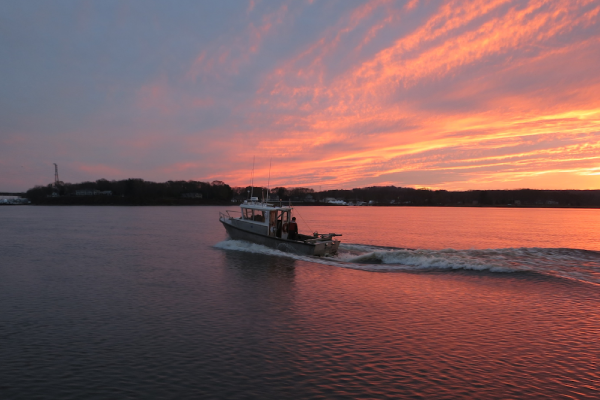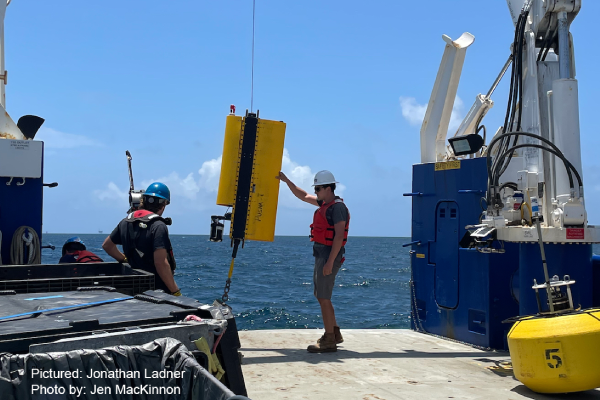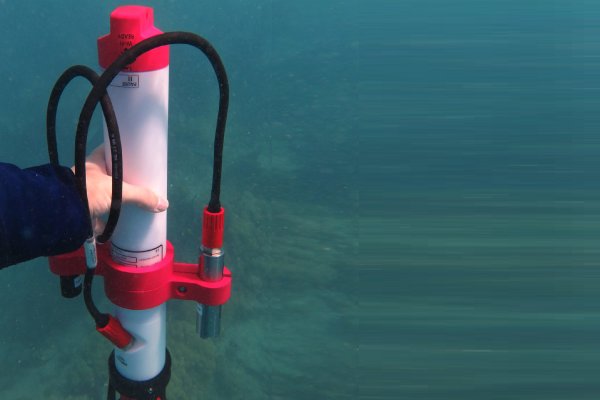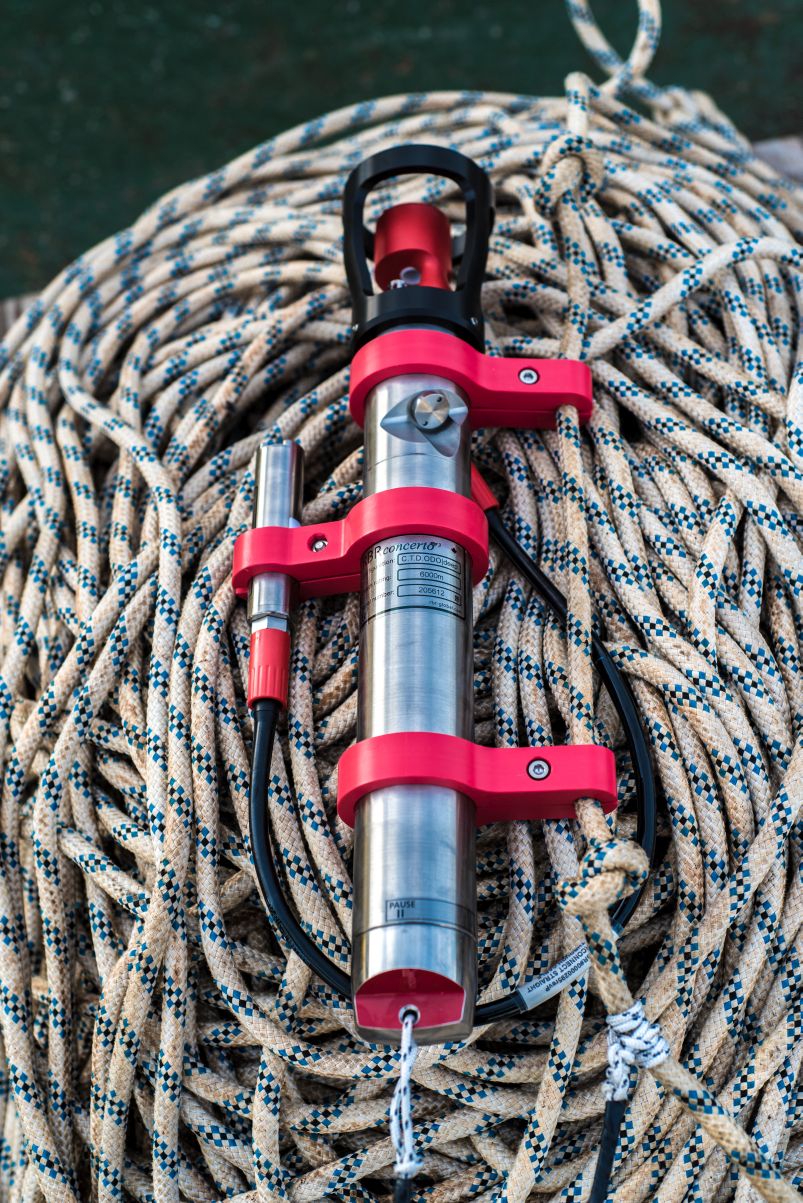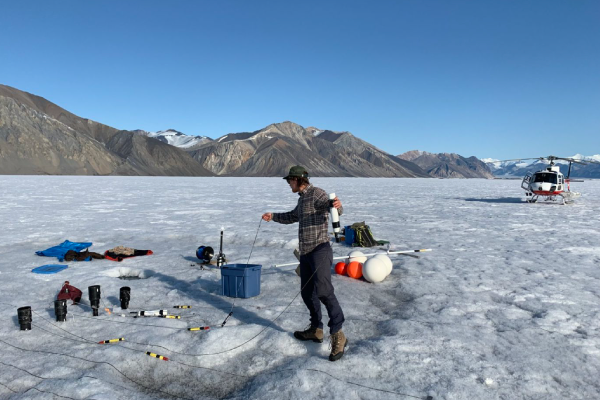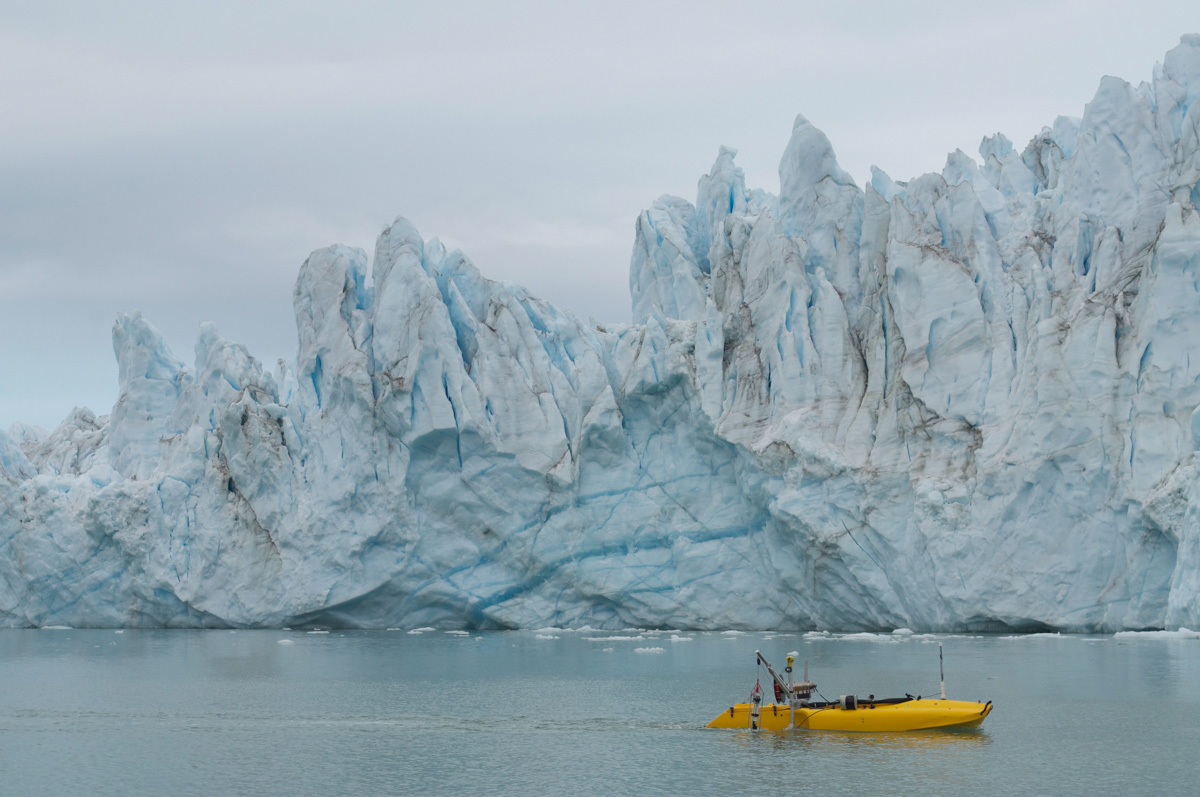Dr. Rocky Geyer, Senior Scientist at Woods Hole Oceanographic Institution, specializes in estuarine and coastal transport processes, sediment transport, and numerical modeling of estuaries and river plumes. But in actuality, everything Geyer studies boils down to a deep love of nature and physics. “At its core, science is about answering questions and understanding. For me, understanding how water mixes or … Read More about Pushing what’s possible: High resolution estuarine sampling using rapid vertical profiling
The SUNRISE Project: Using RBR instruments to unravel mixing in the Gulf of Mexico
The coastal ocean is a dynamic and productive environment, critical for the success of fisheries, tourism, and local economies. But these productive environments are also associated with a variety of complex oceanographic features. To better understand and protect these ecosystems, many physical oceanographers are diving deeper into the dynamics that drive mixing and water exchange. Complex coastal features like currents … Read More about The SUNRISE Project: Using RBR instruments to unravel mixing in the Gulf of Mexico
Sampling by Snorkelling: Using the RBRconcerto³ C.T.D.ODO.Tu to sample mangroves and coral reefs in the Florida Keys
Snorkelling through coral reefs and kayaking through mangroves is undoubtedly not how most ocean scientists would think to deploy a CTD. But thanks to RBR’s easy-to-use, lightweight CTD, SEA Semester students researching coral reefs and mangroves along the Florida Keys were able to do just that. Based in Woods Hole, Massachusetts, Sea Education Association (SEA) is a leading non-profit, independent … Read More about Sampling by Snorkelling: Using the RBRconcerto³ C.T.D.ODO.Tu to sample mangroves and coral reefs in the Florida Keys
RBR loggers deployed in the Cretan Sea (Eastern Mediterranean Sea) to monitor climatic change impact on the marine environment
In February 2021, two deep-sea moorings were deployed in the west Cretan Sea strait (south Aegean Sea) between Crete and Antikythira. The moorings were equipped with two RBRconcerto3 deep-sea loggers, including pressure, temperature, conductivity, and RBRcoda T.ODO dissolved oxygen sensors. The RBR loggers were deployed both at the strait bottom (~900 m) and at intermediate depth (300 m), paired with … Read More about RBR loggers deployed in the Cretan Sea (Eastern Mediterranean Sea) to monitor climatic change impact on the marine environment
RBR instruments study sea level rise in the Canadian Arctic
Since the writing of this story, published in ECO Magazine, the Milne Ice Shelf has collapsed into the Arctic Ocean. A team of Canadian and American researchers are using RBR temperature and salinity loggers to study how the Arctic’s ice shelves are changing over time. By understanding their disappearance, the researchers are able to predict the dynamics of the much … Read More about RBR instruments study sea level rise in the Canadian Arctic
WHOI’s ChemYak equipped with RBRconcerto CTD captures outgassing pulse during ice break-up in Cambridge Bay, Canada
In spring 2018, researchers from Woods Hole Oceanographic Institution (WHOI) surveyed the Arctic nearshore of Cambridge Bay, Canada, by remote-controlled kayak equipped with an RBRconcerto CTD. The CTD and chemical data they collected captured the outgassing pulse associated with ice break-up and helped them identify the physical dynamics that created the pulse, allowing them to better constrain the annual greenhouse … Read More about WHOI’s ChemYak equipped with RBRconcerto CTD captures outgassing pulse during ice break-up in Cambridge Bay, Canada
